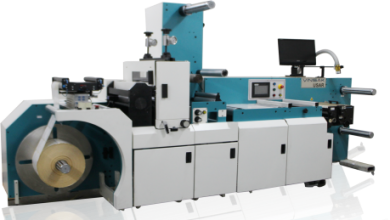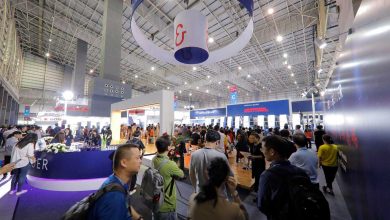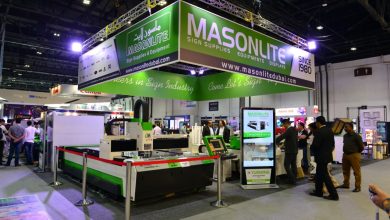Lessons From a Forgotten Thumb Drive
I’d found the old thumb drive in a nook of my home workstation and was about to round-file it when caution prompted me to pop the stick into the laptop first. And, there it was: a slide deck titled “Hot Off the Press—The Top 10 Items Not to Be Missed at drupa 2008.”
The slides were from a presentation I made on behalf of WhatTheyThink at a meeting of the Web Offset Association (WOA), a special-interest group of Printing Industries of America, on April 29 of that drupa year. Nothing in it highlights the technical gulf between then and now more clearly than this opening statement:
“The good news is that this will be the best-reported drupa in history. Four years ago, we in the trade media didn’t have the blogs and the other e-news resources that we rely on so heavily today. Look for continuous coverage of the show every day from the WhatTheyThink editorial team” and, as I went on to say, from all of the other editors and analysts who would be converging upon Messe Düsseldorf about a month after the WOA preview meeting.
For those of us focused on offset lithographic production, there would be much to see and write about. The slides, based on preshow promotional material then available from the exhibiting vendors, offer a cross-section of web and sheetfed presses representing state of the art in offset lithography seven years ago. Many of these presses enjoyed their first taste of commercial success at drupa 2008 (if they were not in distribution already). With subsequent improvements, they’ve continued to stand at the acme of offset lithographic technology to this day.
One slide showed a diagram of a cylinder from what would be the world’s first 96-page commercial web offset press—a four-unit Goss International Sunday 5000 with a four-around, 12-across page configuration and a 112″ web width. The press—a machine far too big to be installed at the Goss stand, but a star of the exhibit nonetheless—featured gapless blankets, automated plate changing, digital inking, and systems for automated presetting, waste reduction, and workflow management.
With its own sights set on 96-page production, MAN Roland made a concept presentation of a 96-page version of the LITHOMAN at drupa 2008. Like the Goss product, the 96-page LITHOMAN was to have a web width of 112″. Shown by Komori for the first time was a much smaller but by no means less advanced web press, the 16-page, AI (artificial intelligence)-enhanced System 38S. Even after nearly seven years, going over the details again makes it all still seem new.
Innovations abounded on the sheetfed side as well. KBA came to drupa 2008 just weeks after a factory demo in which three jobs of 500 sheets each were completed in less than 16 minutes—including 24 plate changes—on the just-introduced Rapida 106, installed with other highly automated equipment at the KBA stand. Heidelberg used the occasion to break into the very large format (VLF) sheetfed market by showing off a brand-new Speedmaster with a 47.63″ x 63.78″ sheet size. MAN Roland announced a perfecting version of its 64″ Roland 900 XXL.Mitsubishi showed a pair of perfectors capable of what it said was the fastest perfecting speed in the world at the time: a still-impressive 16,200 sheets per hour.
None of this is meant to imply that the offset segment has stayed frozen in time since drupa 2008. But, it’s clear that the machines have outlasted the original dimensions of the companies that brought them to the show.
Heidelberg and KBA have both been downsized, and Heidelberg is now deriving nearly half of its income from selling consumables and business services. MAN Roland has become two separately owned and managed companies, one for sheetfed, the other for web. Most of the Japanese press manufacturers are still in operation, but with lower market profiles and in combinations that couldn’t have been foreseen at drupa 2008. Akiyama became integrated with Goss in North America in 2010, the same year that Goss was acquired by the Shanghai Electric Group. Mitsubishi and Ryobi merged last year and are jointly represented in the U.S. by RM Machinery, an equipment dealer.
In hindsight, I find myself wondering why the presentation didn’t include any digital solutions in its roundup of must-sees at drupa 2008. This was the drupa, after all, where HP unveiled its groundbreaking T-series inkjet offset web presses, and there were many equally significant announcements from other digital equipment vendors.
What I know now in any event is that it’s no longer possible to write about offset lithographic technology as something apart from digital printing. Most printers need both capabilities, and the growing list of partnerships among the conventional press manufacturers and the digital system providers reflects the need to bring more digital solutions to market as patterns in the demand for print change. This explains the ongoing collaborations between Komori and Landa Nanographic, HP and KBA, and Heidelberg and Fujifilm, among others.
I think it’s fair to see drupa 2008 as the high-water mark for offset lithographic technology—the point in time when offset presses reached a peak of technical sophistication that they haven’t progressed all that far beyond in the years since. Genuine improvements have been made, but they’ve been incremental ones—not leaps to anything transformative.
But, even if this is a case of something being as good as it’s ever going to get, it’s still pretty darned good. drupa 2008 continues to have important lessons to teach about advancements in printing technology, and it’s in this spirit that the slide deck for the presentation to WOA was prepared. The thumb drive—a time capsule from those days—remains within reach on my desktop as I type this post to a close.
This article originally appeared on WhatTheyThink.com as “Sliding Back to 2008: a drupa Retrospective.” WhatTheyThink.com is the printing and publishing industry’s leading media organization. Article Copyright WhatTheyThink 2015. All rights reserved.

.gif)



